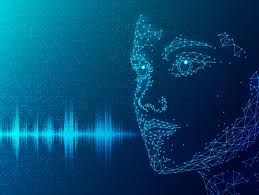Deepfake technology is one of artificial intelligence’s more contentious consequences in a time when it is revolutionizing various sectors. Deepfakes, which create hyper-realistic content or swap faces in videos, may initially appear to be a fun tool. Beneath the novelty, however, is a growing threat that threatens security, privacy, trust, and even democracy.
The definition of deepfake technology, the dangers it presents, and—above all—how to spot and guard against deception will all be covered in this blog.
Deepfake Technology: What Is It?
Deepfakes are audio, video, or image clips that have been altered by machine learning (ML) and artificial intelligence (AI) to make it appear or sound as though someone said or did something they never did.
These technologies may effectively mimic body motions, speech tones, and facial expressions using deep learning techniques, especially generative adversarial networks (GANs), making it challenging to distinguish between real and fake.
What Makes Deepfakes Risky?
1. Political manipulation and disinformation
Deepfakes have previously been deployed to mimic celebrities and politicians, giving the impression that they said or did something inappropriate. This has the potential to swiftly spread misleading information, harm people’s reputations, and affect elections or public opinion.
2. Scams and Cybercrime
Deepfakes are being used by scammers to deceive people or companies, such as by mimicking a CEO’s voice to approve wire transfers or obtain sensitive data without authorization.
3. Violations of Personal Privacy
Without their agreement, people have had their faces included in graphic videos—a gravely offensive practice that is regrettably becoming more widespread.
4. The Decline of Trust
Video evidence is becoming less reliable as deepfakes get more realistic. We risk losing faith in institutions, the media, and even one another if the adage “seeing is believing” is no longer true.
Methods for Identifying Deepfakes
Even while deepfakes are getting more sophisticated, you can still spot them if you know what to look for.
1. Unusual Motions of the Face
AI occasionally has trouble mimicking natural lip movements, blinking, or facial responses to emotions. A deepfake might be present if the subject’s face appears rigid or their eyes don’t blink properly.
2. Problems with Lip Sync
Keep a watchful eye out for any little discrepancies between lip movement and speech. Ineffective synchronization is a warning sign.
3. Varying Shadows and Lighting
Particularly in the vicinity of the face and neck, the lighting may not blend in with the rest of the environment.
4. Flickering or blurry edges
Examine the facial or body margins; some deepfakes have blurring or shimmering outlines.
5. Odd Background Elements
Certain deepfakes have the potential to warp objects or background elements that overlap the subject.
6. Employ AI Detection Instruments
Deepfakes can be identified using several new tools, such as:
- The Microsoft Video Authenticator
- Scanner for Deepware
- AI Sensitivity
These programs can flag questionable information and examine videos for indications of tampering.
How to Keep Yourself Safe
- Check the Source: If you come across a startling video, make sure the publication was trustworthy.
- Cross-Reference: Check to see if the same story is reported by other reliable sources.
- Keep Yourself Informed: Deepfakes are easier to spot the more you understand about them.
- Use Fact-Checking Services: Viral content is frequently covered by websites such as FactCheck.org, Reuters, and Snopes.
- Be skeptical, not cynical: Don’t believe everything you see, but also don’t write out the media.
Concluding remarks
When used properly, deepfake technology can be entertaining and engaging, but when misused, it can be dangerous. Our best protection against increasingly complex deepfakes is awareness and digital literacy. We may contribute to maintaining confidence in our digital world by learning to recognize distorted information and prioritizing the truth over virality.



